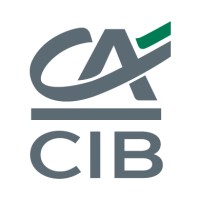Company Cyber Security Posture
NANA
NA Company Details
NA
NA
NA
NA
NA
NA
Scan still pending
NA
NA
Between 200 and 800
This score is AI-generated and less favored by cyber insurers, who prefer the TPRM score.
 NA Global Score
NA Global Score.png)

Company Scoring based on AI Models
| Model Name | Date | Description | Current Score Difference | Score |
|---|---|---|---|---|
| AVERAGE-Industry | 03-12-2025 | This score represents the average cybersecurity rating of companies already scanned within the same industry. It provides a benchmark to compare an individual company's security posture against its industry peers. | N/A | Between 200 and 800 |
Company Cyber Security News & History
| Entity | Type | Severity | Impact | Seen | Url ID | Details | View |
|---|
Company Subsidiaries

NA
Access Data Using Our API

Get company history
.png)
NA Cyber Security News
Two Breaches, One Bank: Lessons from The ICBC Cyber Crisis
In late 2023, a major disruption rippled across the $26 trillion U.S. Treasury market. Bank trades halted. Communication systems collapsed.
Singapore's DBS, BoC customer data at risk after ransomware attack on vendor
DBS said on Monday customer statements of around 8,200 clients were at risk, but their systems were not compromised and customer deposits and ...
China Issued Draft Administrative Measures for Reporting of Cybersecurity Incidents in Financial Business Operation
The People's Bank of China recently released the Draft Administrative Measures for Reporting of Cybersecurity Incidents in the Operational Areas ...
China Cybersecurity and Data Protection: Monthly Update - June 2025 Issue
This newsletter summarises the latest developments in cybersecurity and data protection in China with a focus on the legislative, ...
DBS & Bank of China Singapore hit by cyberattack
A ransomware attack on a printing vendor has exposed customer data from DBS and Bank of China Singapore, highlighting urgent supply chain ...
‘Cybersecurity with Chinese Characteristics’: Digital governance in the Indo-Pacific
ARTICLE 19's new report reveals how China is expanding its digital authoritarian model of cybersecurity governance across the Indo-Pacific, posing a grave ...
Chinese banking giant’s US arm hit by ransomware attack
A U.S. subsidiary of China's largest bank was hit by a ransomware attack Wednesday that resulted in disruption to certain financial services ...
SEC settles with ICBC unit over ransomware attack, imposes no fine
The U.S. Securities and Exchange Commission has settled record keeping charges against an Industrial and Commercial Bank of China unit ...
China's ICBC, the world's biggest bank, hit by cyberattack that reportedly disrupted Treasury markets
The U.S. financial services division of Chinese bank ICBC was hit with a cyberattack that reportedly disrupted the trading of Treasurys.

NA Similar Companies

Handelsbanken
We are Europe's safest commercial bank, with roots in local communities throughout Sweden, the Netherlands, Norway, and the UK. Across a range of digital and physical meeting places, our branch teams offer ‘up close and personal’ financial advice and solutions, based on customers’ individual needs.

National Bank of Canada
At National Bank, we believe in the potential of each individual, and that even the smallest gestures can make a big difference. When we help others accomplish their projects, we help empower them and the community at large. We try to make a difference through innovation, but above all, by puttin

RBC
Royal Bank of Canada is a global financial institution with a purpose-driven, principles-led approach to delivering leading performance. Our success comes from the 94,000+ employees who leverage their imaginations and insights to bring our vision, values and strategy to life so we can help our clien

Security Bank Corporation
Security Bank is one of the Philippines’ best-capitalized private domestic universal banks. Established in 1951 and publicly listed with the Philippine Stock Exchange (PSE: SECB) in 1995, our major businesses cover retail, corporate, commercial, and business (MSME) banking. We’re recognized as an E

Crédit Agricole CIB
Crédit Agricole CIB is the corporate and investment banking arm of Crédit Agricole Group, the 10th largest banking group worldwide in terms of tier 1 capital (The Banker, July 2022). Nearly 8,600 employees across Europe, the Americas, Asia-Pacific, the Middle East and North Africa support Crédit A

Raiffeisen Switzerland
Raiffeisen Switzerland is the third largest banking group in Switzerland. Raiffeisen Switzerland has a cooperatively structured group is one of Switzerland's leading retail banks. Today, Raiffeisen has 3.6 million Swiss citizens as clients. Of these, 1.9 million are cooperative members of their Rai

Frequently Asked Questions
Explore insights on cybersecurity incidents, risk posture, and Rankiteo's assessments.
NA CyberSecurity History Information
How many cyber incidents has NA faced?
Total Incidents: According to Rankiteo, NA has faced 0 incidents in the past.
What types of cybersecurity incidents have occurred at NA?
Incident Types: The types of cybersecurity incidents that have occurred include .
Additional Questions
What Do We Measure?
















Every week, Rankiteo analyzes billions of signals to give organizations a sharper, faster view of emerging risks. With deeper, more actionable intelligence at their fingertips, security teams can outpace threat actors, respond instantly to Zero-Day attacks, and dramatically shrink their risk exposure window.
These are some of the factors we use to calculate the overall score:
Identify exposed access points, detect misconfigured SSL certificates, and uncover vulnerabilities across the network infrastructure.
Gain visibility into the software components used within an organization to detect vulnerabilities, manage risk, and ensure supply chain security.
Monitor and manage all IT assets and their configurations to ensure accurate, real-time visibility across the company's technology environment.
Leverage real-time insights on active threats, malware campaigns, and emerging vulnerabilities to proactively defend against evolving cyberattacks.




